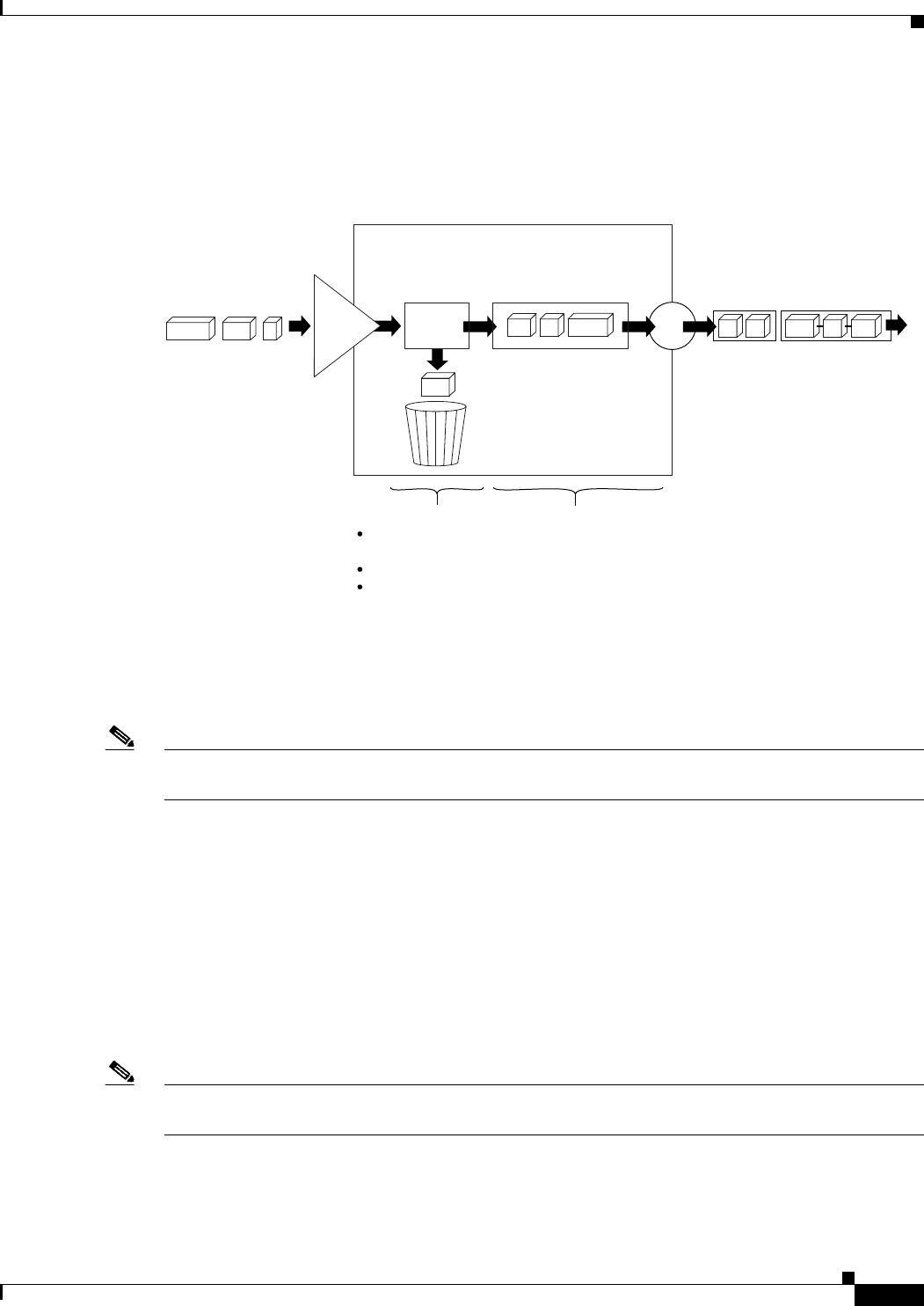
63-5
User Guide for Cisco Security Manager 4.4
OL-28826-01
Chapter 63 Configuring Quality of Service
Quality of Service on Cisco IOS Routers
interface begins to show signs of congestion. By dropping some packets early instead of waiting until
the queue is full, WRED avoids dropping large numbers of packets at once and allows the transmission
line to be used fully at all times.
Figure 63-1 Weighted Random Early Detection
WRED is useful only when the bulk of the traffic is TCP/IP traffic, because TCP hosts reduce their
transmission rate in response to congestion. With other protocols, packet sources might not respond, or
might resend dropped packets at the same rate. As a result, dropping packets does not decrease
congestion.
Note WRED treats non-IP traffic as precedence 0, the lowest precedence value. Therefore, non-IP traffic is
more likely to be dropped than IP traffic.
Related Topics
• Low-Latency Queuing, page 63-5
• Default Class Queuing, page 63-6
• Understanding Queuing Parameters, page 63-4
Low-Latency Queuing
The low-latency queuing (LLQ) feature brings strict priority queuing to CBWFQ. Strict priority queuing
gives delay-sensitive data, such as voice traffic, preference over other traffic.
Note Although it is possible to assign various types of real-time traffic to the strict priority queue, we strongly
recommend that you direct only voice traffic to it.
Incoming packets
Transmit
queue
Outgoing
packets
FIFO scheduling
Queueing
buffer
resources
144752
Discard test based on:
Buffer queue
depth
IP Precedence
RSVP session
Classify
Discard test


















